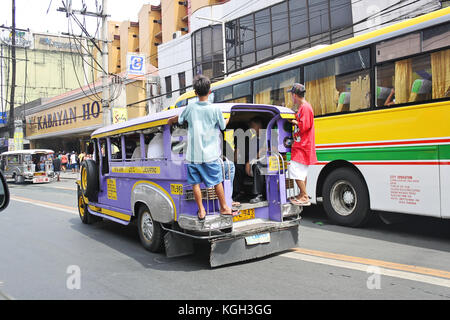Transit Advertising Philippines: An Innovative Means to Promote
Transit Advertising Philippines: An Innovative Means to Promote
Blog Article
Just How Transportation Marketing Can Transform Public Transport Spaces Into Dynamic Marketing Platforms
Transit advertising and marketing holds considerable capacity to redefine public transportation rooms right into vibrant advertising systems that educate and engage. As we explore the complex advantages and progressing approaches of transportation marketing, it increases the inquiry of exactly how this makeover might redefine our communications with both brands and the metropolitan environment.
Advantages of Transportation Advertising

Additionally, transportation advertising and marketing is extremely cost-efficient contrasted to standard media. It enables advertisers to accomplish high impacts at lower expenses, making the most of roi. The captive target market of commuters offers an opportunity for brand names to communicate their messages to people who are usually receptive during their traveling times.
In addition, the vibrant nature of transportation marketing enables projects to be updated regularly, guaranteeing that messaging stays timely and pertinent. This flexibility can be vital in replying to market fads or promotional events, keeping the brand top-of-mind for customers. Lastly, the pervasive existence of transit marketing contributes to brand recall; repeated direct exposure within familiar traveling contexts reinforces brand name recognition and fosters customer loyalty, ultimately improving and driving sales brand name track record.
Kinds Of Transportation Advertising
Public transport systems supply numerous layouts for advertising and marketing, each accommodating different marketing strategies and target market involvement techniques. One noticeable type is external bus and train covers, which cover the whole vehicle and create a mobile signboard effect, permitting high exposure in city environments. These covers can record attention as they go across busy streets, getting to a diverse target market.
Another prominent style is interior marketing, that includes posters, electronic displays, and ads on transportation seats. These placements engage guests during their trip, strengthening brand messaging in a constrained room. Digital presents, specifically, supply the benefit of vibrant web content, enabling marketers to update messages in real-time.
Station advertising is additionally substantial, including posters, banners, and interactive booths within transportation stations. These advertisements utilize foot web traffic and can target particular demographics based on area.
Last but not least, advertising collaborations with transit authorities can cause distinct campaigns, such as themed transportation experiences or events, improving the general interaction with commuters. Each kind of transit marketing supplies unique benefits, allowing brands to customize their technique to successfully reach their target audience within the public transportation ecological community.
Involving Commuters Successfully
Commuters are progressively inundated with advertising and marketing messages during their everyday trips, making it essential for brands to engage them in ingenious ways. To catch attention in this jampacked space, marketers must prioritize creativity and importance. Utilizing appealing visuals and concise messaging can considerably enhance the chance of engagement.
Interactive components, such as QR codes or enhanced truth attributes, can also change static ads into immersive experiences, fostering a deeper link with the my site target market. Brand names must concentrate on attending to travelers' demands and rate of interests, customizing messages to resonate with their lifestyle, whether through promos for local businesses or services made to boost their travelling experience.
In addition, timing plays a critical role; purposefully positioning ads during optimal commuting hours can optimize visibility and impact. Engaging travelers efficiently additionally involves leveraging social media assimilation, allowing passengers to share their promotions or experiences straight from transportation platforms, thereby amplifying brand name reach.
Basically, effective engagement depends upon recognizing the traveler trip and producing compelling, interactive, and relevant marketing experiences that not just record attention but also drive action and loyalty. By doing so, brand names can transform public transport into Our site a vibrant advertising and marketing system that reverberates with its target market.

Measuring Marketing Influence
Exactly how can brand names precisely evaluate the efficiency of their advertising campaigns in transportation environments? Measuring the effect of transportation advertising calls for a complex approach that integrates measurable and qualitative metrics. One prevalent technique is tracking engagement via mobile analytics, where brands can assess foot website traffic patterns and application interactions before, during, and after projects.
Surveys can supply valuable understandings right into brand recall and consumer belief, permitting brand names to assess exactly how well their messages reverberate with travelers. In addition, keeping track of social networks interaction pertaining to particular projects can reveal shifts in public assumption and brand discussion.

Additionally, working together with transportation agencies can improve dimension precision, as they frequently have thorough demographic information on ridership trends. By incorporating these approaches, brand names can establish a comprehensive understanding of their marketing efficiency, making certain that their campaigns not only get to but additionally impact their target market effectively.
Future Trends en route Advertising
A considerable change is prepared for en route marketing as technological innovations and changing customer next page behaviors improve the landscape. Transit Advertising Philippines. The assimilation of digital displays and interactive media is expected to enhance engagement, permitting brand names to supply vibrant material that resonates with diverse target markets. As public transportation systems accept clever modern technology, marketers will take advantage of real-time data analytics to tailor messages based upon guest demographics and behaviors
Furthermore, augmented reality (AR) is poised to revolutionize the way travelers communicate with ads. By providing immersive experiences, AR can change an ordinary trip into an appealing narrative that catches attention and promotes brand name commitment. This technology will likely urge marketers to develop even more experiential campaigns that drive customer communication.
Sustainability is an additional vital pattern affecting transit advertising and marketing. As ecological consciousness expands, brand names will increasingly seek to line up with environment-friendly practices, using lasting products and promoting environment-friendly initiatives within their projects.
Conclusion
To conclude, transit advertising supplies substantial advantages by improving brand visibility and engaging a captive audience. With numerous formats, such as exterior wraps and electronic displays, it transforms public transport into a vibrant advertising and marketing system. Efficient involvement techniques and robust dimension methods additionally amplify its impact. As trends develop, the capacity for cutting-edge communications between commuters and brands is positioned to expand, making certain that transit advertising remains a crucial element of modern-day marketing approaches.
Transit marketing holds significant potential to redefine public transportation spaces into dynamic advertising platforms that engage and notify. The prevalent visibility of transportation advertising contributes to brand recall; repeated exposure within acquainted travel contexts enhances brand awareness and fosters customer commitment, inevitably enhancing and driving sales brand name track record.
Exactly how can brand names precisely assess the efficiency of their advertising and marketing projects in transit environments?In final thought, transit advertising and marketing provides significant advantages by enhancing brand exposure and engaging a captive audience. Transit Advertising Philippines. As fads develop, the possibility for innovative communications in between brands and commuters is positioned to expand, making sure that transit marketing continues to be an important part of modern-day marketing approaches
Report this page